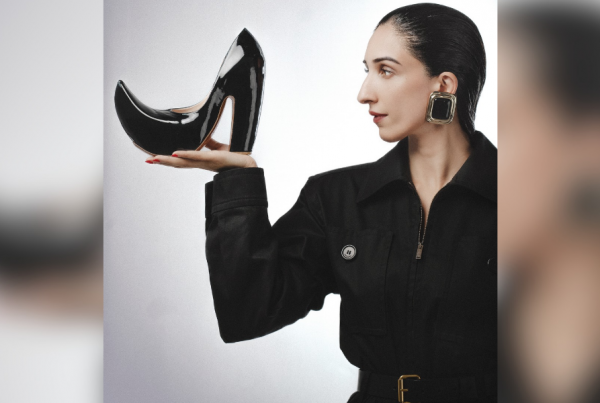Bushra Waqas Khan, a skilled printmaker and dressmaker based in Lahore, Pakistan was recently featured in Vogue India for her impeccable skills and craftsmanship in making miniature dresses. However, what sets Bushra apart is the fact that she is breathing new life into monotonous, function-specific state documents such as affidavit stamp papers, circulated among busy courtrooms. Bushra uses them to create fluid, sculptured gowns that are hand-stitched and majestic. The artist’s work is being exhibited at the Indian Art Fair (IAF) in New Delhi.
According to Vogue, Bushra has been designing miniature dresses that are loaded with political symbolism. With their luxuriously flared skirts and cinched waistlines, each gown is emblematic of the discourse surrounding the female body and colonialism.
View this post on Instagram
Although Bushra Khan fashioned her first miniature dress in 2019, she already has a few noteworthy exhibition credentials, including one at the famous Grosvenor Gallery in London. Last year, she also became a Jameel Prize finalist. One of her pieces, a gorgeous 20-inch hybrid gown, boasting European gigot sleeves and a pleated Mughal jama with a salmon-pink hem—was recently exhibited at the V&A. The ingenious pattern that graces the dress was borrowed from the humble stamp paper: motifs laboriously hand-cut and collaged on a large pad to form new arrangements were then printed onto fabric using heat-transfer paper.
View this post on Instagram
A graduate of National College of Arts (NCA), Bushra chanced upon multiple copies of the affidavit stamp paper cached in her father’s locker. She was mesmerized by the intricate motifs printed on the paper, including that of the five-tipped star cocooned within the crescent moon. At the same time, she was shocked to discover that “that piece of paper held more value than who you are in Pakistan,” she explained in the interview. “It’s a proof of possession and our lives are all linked to it somehow.”
The affidavit stamp paper, among many things, signifies one’s ownership of land and property. “While mothers bequeath their heirloom jewellery and clothes to their daughters, fathers give this piece of paper to their male heirs,” she said. Having grown up in a conservative family herself, she wanted to critique the skewed gender differences relating to inheritance rampant in South Asian familial structures through her dresses.
The garments’ designs, shapes and silhouettes are centered on an imperial past, serving as a strong reminder of the impact colonialism had on Pakistan. “If you look at the motifs on the stamp paper, they do not seem to be from this region. Remove the star and the crescent emblems, remove the ‘Pakistan’ text written on it, and everything else is Western,” she said. “Similarly, the garments are a fusion of cultures. They represent a blend of who we are.”
A feminist and an aesthete, the artist has also been working on a collection called the ‘Leftovers’, where she repurposes unused swathes of fabric from other garments that would otherwise be discarded. ‘A Well-Loved Slice Of Leftovers’, a silk and organza gown stitched using fabric salvaged from her earlier works, is very close to her heart. “I have felt ‘left over’ so many times, in terms of being a woman,” she shared in the interview. “It’s a feeling many women face, since they are often the last ones to be thought of.” The collection, therefore, is a nod to sisterhood, reflecting how “beautiful, leftover pieces can come together to create something magical and grand,” she said.
Two of her dresses that will also be on display at the fair are ‘Barcode’ and ‘Medallion’.





